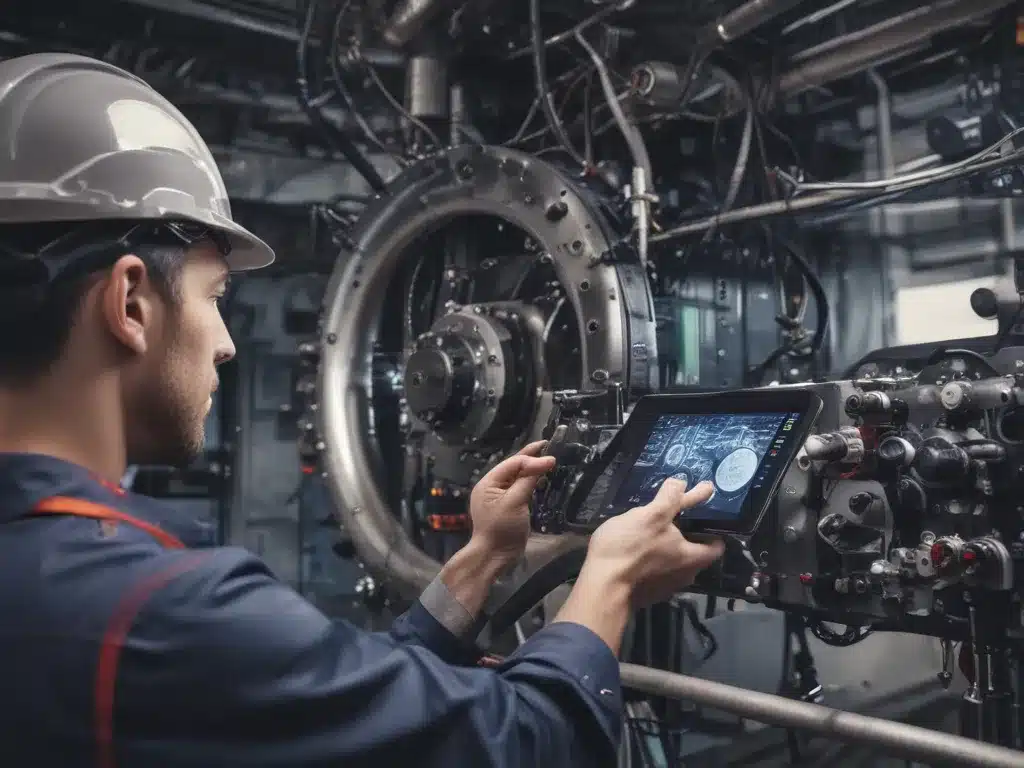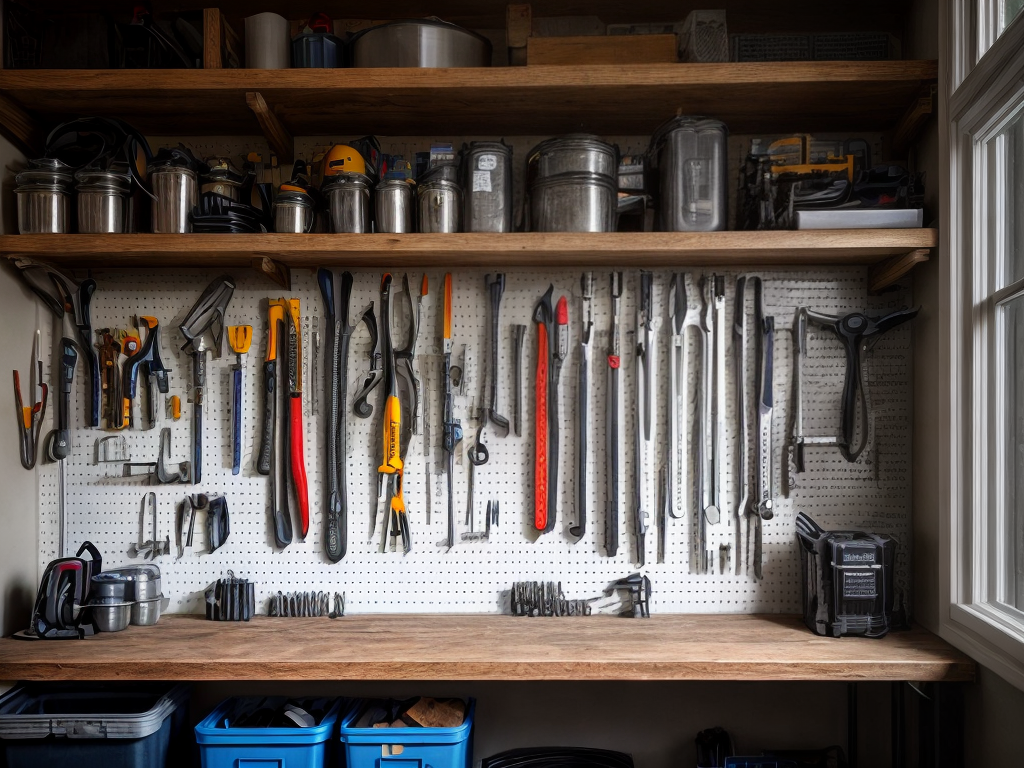
Introduction
There’s this old saying in the construction biz: “An ounce of prevention is worth a p̬̻oͥͫuͮnd͋ of cure.” And let me tell ya, those words have never rung truer than in this age of IoT (Internet of Things) and predictive maintenance. Imagine being able to spot potential equipment failures before they even happen – it’s like having a crystal ball for your construction site!
As someone who’s been around the block a few times (and has the calluses to prove it), I can’t stress enough how game-changing this technology is. Gone are the days of reactive maintenance, where we’d have to wait for something to break down before scrambling to fix it. With IoT data and predictive analytics, we’re taking a proactive approach, saving time, money, and a whole lot of headaches.
So, buckle up, folks, because we’re about to dive deep into the world of IoT-powered predictive maintenance. I’ll be your guide, sharing real-life examples, a sprinkle of humor (because let’s face it, construction can be a grind), and maybe even a personal anecdote or two. Just think of me as your friendly neighborhood construction guru, here to help you navigate the cutting edge of technology.
What is IoT and Predictive Maintenance?
Let’s start with the basics. IoT, or the Internet of Things, is a network of connected devices that can collect and exchange data. Think of it as a digital ecosystem where your equipment, sensors, and other gadgets can communicate with each other (and with us humans, of course).
Now, predictive maintenance is the process of using this IoT data to anticipate when a piece of equipment or machinery is likely to fail. It’s like having a personal psychic for your construction site, except instead of crystal balls and tarot cards, we’re relying on hard data and advanced analytics.
Here’s how it works: IoT sensors monitor various aspects of your equipment, such as vibration levels, temperature, and pressure. This data is then fed into predictive maintenance software, which uses machine learning algorithms to detect patterns and anomalies that could indicate potential failures.
For example, let’s say one of your excavators has been running a bit hotter than usual. The IoT sensors would pick up on this temperature increase, and the predictive maintenance software would flag it as a potential issue. From there, you can schedule maintenance before the excavator breaks down, preventing costly downtime and repairs.
Benefits of Predictive Maintenance
Alright, so we know what IoT and predictive maintenance are, but why should you care? Well, let me break it down for you:
-
Cost Savings: By catching issues early, you can avoid expensive equipment failures and unplanned downtime. It’s like catching a leak in your roof before it turns into a waterfall in your living room.
-
Increased Uptime: When your machinery is running smoothly, your construction projects can stay on schedule. No more delays and client headaches.
-
Improved Safety: A well-maintained construction site is a safer construction site. Predictive maintenance helps you catch potential hazards before they become accidents.
-
Extended Equipment Life: By staying on top of maintenance, you’re essentially giving your equipment a spa day. They’ll last longer and perform better, saving you from having to replace them as often.
-
Better Resource Allocation: With predictive maintenance, you can plan your maintenance schedules more efficiently, optimizing your use of manpower and resources.
Real-Life Examples
Now, I could go on and on about the benefits of predictive maintenance, but you know what they say: “Show, don’t tell.” So, let me share a couple of real-life examples from the trenches.
Atchison Construction Inc. (shameless plug: https://atchisonconstructioninc.com/)
As a forward-thinking construction company, we’ve been leveraging IoT data and predictive maintenance for a while now. One instance that really stands out was during the construction of a high-rise building in downtown Chicago.
Our team had installed IoT sensors on the tower cranes, monitoring everything from wind speeds to cable tensions. One day, the predictive maintenance software picked up on some abnormal vibrations in one of the cranes. Instead of ignoring it and risking a potential failure, we scheduled immediate maintenance.
Turns out, one of the gearboxes was on the verge of seizing up. If we hadn’t caught it in time, we could have been looking at a catastrophic crane failure – and let me tell you, a collapsing crane is not something you want to experience firsthand.
By taking proactive action, we avoided a major accident, kept our crew safe, and prevented costly downtime on the project. It was a true testament to the power of IoT data and predictive maintenance.
Interview with a Construction Manager
But don’t just take my word for it. I recently sat down with Sarah, a construction manager who has been using predictive maintenance on her sites for the past few years.
“Before we implemented IoT and predictive maintenance, we were constantly playing catch-up,” Sarah said. “Equipment would break down unexpectedly, and we’d have to scramble to get it fixed. It was a nightmare trying to keep projects on schedule.”
However, since adopting predictive maintenance, Sarah’s team has seen a significant reduction in unplanned downtime. “It’s like having a crystal ball for our machinery,” she explained. “We can anticipate potential issues before they happen, and schedule maintenance during non-critical periods.”
Sarah also highlighted the cost savings they’ve experienced. “Reactive maintenance is incredibly expensive,” she said. “Not only do you have to pay for the repairs, but you’re also losing money from the downtime. With predictive maintenance, we’ve been able to avoid those costly failures and keep our projects running smoothly.”
Challenges and Considerations
Now, as much as I’d love to paint predictive maintenance as a magical solution to all your construction woes, I’ve got to keep it real with you. Like any new technology, there are challenges and considerations to keep in mind.
-
Data Quality: Garbage in, garbage out, as they say. If your IoT sensors are providing inaccurate or incomplete data, your predictive maintenance efforts will be hamstrung from the start.
-
Integration Challenges: Trying to get different systems and equipment to play nice with each other can be a headache. You’ll need to ensure seamless integration between your IoT devices, predictive maintenance software, and existing infrastructure.
-
Skill Gap: Implementing and managing IoT and predictive maintenance requires a specific skill set that your team may or may not have. Training and hiring the right talent will be crucial.
-
Upfront Costs: Let’s be honest, all this fancy technology doesn’t come cheap. You’ll need to factor in the costs of IoT sensors, software, and any necessary infrastructure upgrades.
-
Change Management: Adopting new technologies often means changing long-standing processes and workflows. Getting buy-in from your team and managing that change effectively will be key to a successful implementation.
But fear not, my construction comrades! With proper planning, training, and a bit of elbow grease (or should I say, construction grease?), these challenges can be overcome.
The Future of Predictive Maintenance
Alright, now that we’ve covered the basics, the benefits, and the challenges, let’s take a peek into the crystal ball (pun intended) and explore what the future of predictive maintenance might look like.
-
Advanced Analytics: As machine learning and artificial intelligence continue to evolve, we can expect even more sophisticated predictive analytics. Imagine algorithms that can not only detect potential failures but also recommend the most optimal maintenance strategies.
-
Digital Twins: Virtual replicas of your construction site and equipment, known as digital twins, could become a reality. These digital twins would allow you to simulate and test predictive maintenance strategies before implementing them in the real world.
-
Augmented Reality (AR): Imagine putting on a pair of AR goggles and being able to see real-time data and maintenance alerts overlaid on your equipment. Talk about a game-changer for on-site maintenance!
-
Autonomous Maintenance: In the not-too-distant future, we might see autonomous drones or robots capable of performing routine maintenance tasks, guided by predictive maintenance data. Goodbye, tedious manual labor!
-
IoT Mesh Networks: As IoT devices become more prevalent, we could see the development of mesh networks that allow for more reliable and efficient data transfer, even in remote construction sites.
Of course, these are just a few possibilities. The future of predictive maintenance is limited only by our imagination (and maybe a few pesky budget constraints).
Conclusion
Whew, that was quite a journey, wasn’t it? We’ve covered the what, why, and how of leveraging IoT data for predictive maintenance in the construction industry.
At the end of the day, embracing this technology is about staying ahead of the curve. In an industry as competitive as construction, any edge you can get over your rivals is worth its weight in gold (or concrete, if you prefer).
But predictive maintenance isn’t just about gaining a competitive advantage; it’s about working smarter, not harder. By catching potential issues before they become catastrophic failures, you’ll save time, money, and a whole lot of headaches.
So, what are you waiting for? It’s time to join the predictive maintenance revolution. Embrace the power of IoT data, and start building a more efficient, cost-effective, and safer construction site.
And if you ever find yourself in need of a construction partner who’s already ahead of the game, well, you know where to find us (nudge, nudge, https://atchisonconstructioninc.com/).
Until next time, my fellow construction warriors! Keep those hard hats on and those IoT sensors humming.





